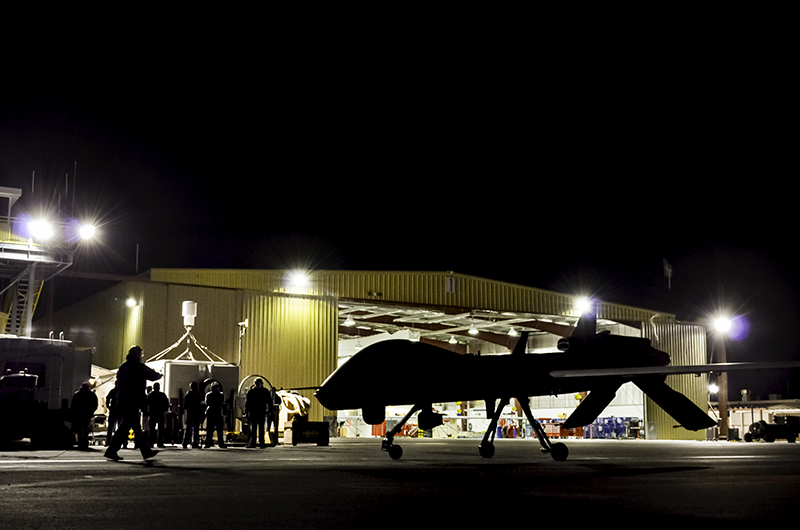General Atomics’s Improved Gray Eagle can perform SIGINT (Signal Intelligence) and attack during the same mission.
As if those already available weren’t enough, drones now embed more capabilities.
During its second long endurance flight, the U.S. Army’s Improved Gray Eagle (IGE) prototype demonstrated its ability to carry SIGINT payload in a pod on one wing and two Hellfire missiles on the other.
The Unmanned Aircraft System (UAS) remained in the air for 36.7 hours: it was launched on January 17 and landed back at General Atomics’s El Mirage Flight Operations Facility, in Palmdale, California, on January 19.
The flight, which proved the aircraft’s endurance in this peculiar payload configuration, follows IGE’s first endurance sortie, that occurred in October 2013, when the drone remained mid-air for 45 hours in a Reconnaissance, Surveillance, and Target Acquisition (RSTA) configuration, with no external payloads integrated.
According to GA, with the endurance claims with payload validated, IGE will receive software updates that will allow its operation from the U.S. Army’s One System Ground Control Station (OSGCS) and future Universal Ground Control System (UGCS), that will be tested this summer.
The IGE is an updated version of the U.S. Army’s Gray Eagle, a medium-altitude long-endurance) (MALE) UAS developed for and operated by the United States Army.
Gray Eagle is an advanced derivative of the most famous U.S. drone: the Predator. The U.S. Army operates a fleet of about 75 such aircraft (34 more to be delivered by 2015), the first of those were deployed in 2009.
Since Nov. 19, 2013 even the 160th Special Operations Aviation Regiment (Airborne) “Night Stalkers”, the U.S. Army special ops force which provides support for both general purpose and special operations forces flying MH-47G Chinooks, MH-60L/K Black Hawks, A/MH-6M Little Birds, MH-X Silent Hawks (the latter is an unconfirmed designation) and maybe stealthy Little Birds and stealthy Chinooks as well, operates the MQ-1C Gray Eagle.
The MQ-1C is specialized in providing direct operation control by Army field commanders and its roles includes Reconnaissance, Surveillance, and Target Acquisition (RSTA); convoy protection; Improvised Explosive Device (IED) detection; providing aerial imagery to combat patrols and pattern of life analysis. It can also conduct precision weapons delivery missions thanks to a payload of over 1,000 lb. In Intelligence, Surveillance and Reconnaissance (ISR) configuration, its endurance is 25 hours and operating altitude is up to 25,000 feet.
Image credit: General Atomics

















